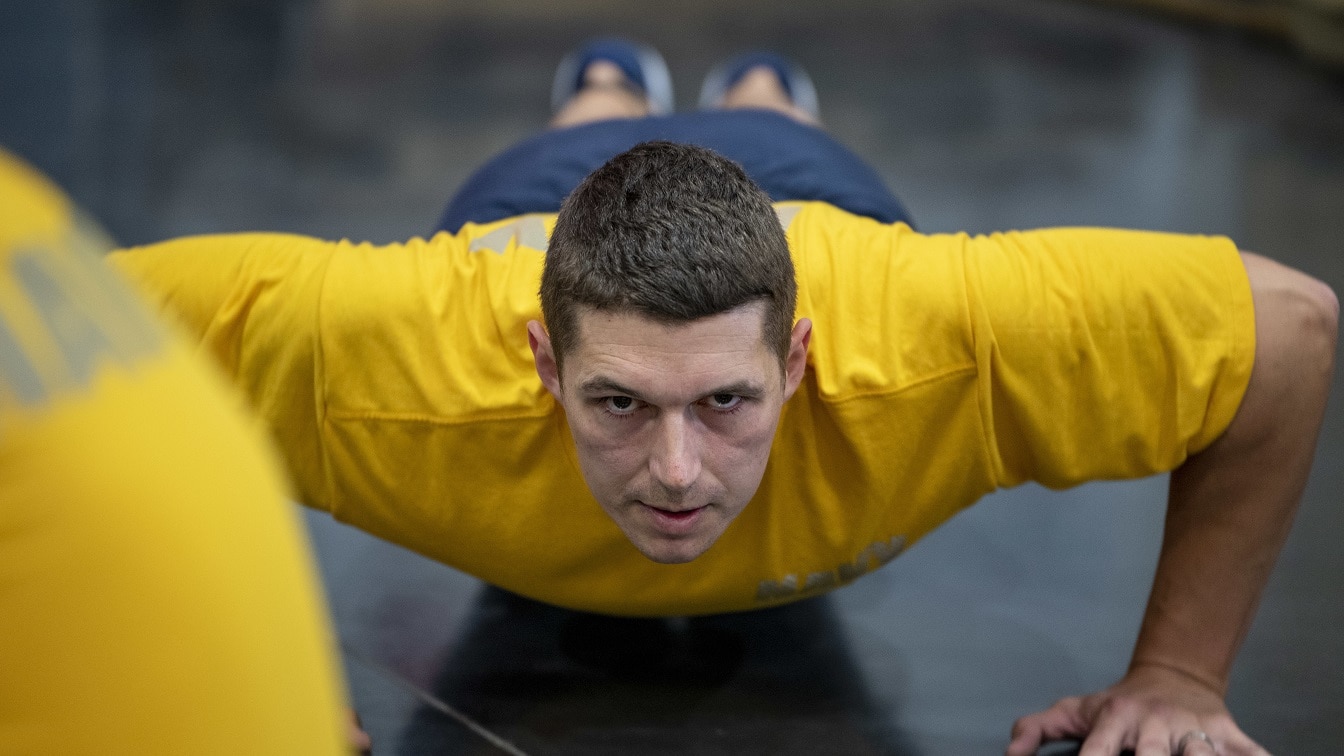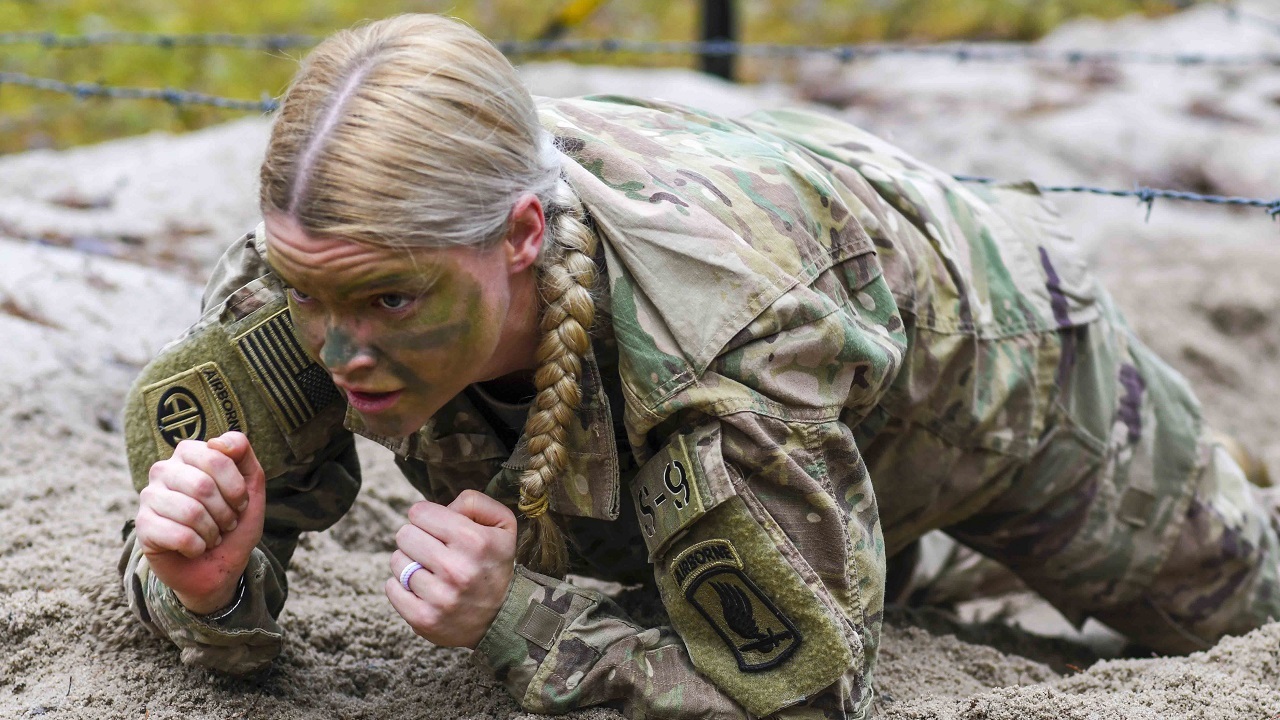Summary and Key Points: The U.S. military faces recruitment challenges and has resorted to lowering standards, a harmful strategy impacting readiness and combat effectiveness.
-Poor physical health, subpar education, and previously implemented DEI policies contribute to these recruitment issues.
-Despite recent upticks under Trump’s administration after eliminating DEI, a lasting solution demands raising, not lowering, standards.
-Improving youth health and education, removing ineffective DEI practices, and emphasizing incentives like education and quality of life are essential.
-Ultimately, prioritizing quality recruits who can handle rigorous training and combat conditions is critical.
–Maintaining high standards preserves military effectiveness, strengthens retention, and enhances national security.
Lowering The Standards To Reach U.S. Military Recruitment Goals Is A Mistake
The U.S. military has been forced to lower standards to reach recruiting goals. While understandable to a point, this is a losing proposition that affects readiness, reduces the force’s lethality, and ultimately cuts down on valuable training time as commanders are forced to deal with issues instead of training their troops.
How Did the Military Reach This Point?
The military has always been a cultural microcosm of society, and U.S. society has changed in the last generation. Americans are much less active, with more morbidly obese people—frequently very young—who are developing health problems at much earlier ages than in previous generations.
Americans are also less educated. The country’s education levels in reading, mathematics, and sciences are far below where they should be. These things have a profound effect on whether people even qualify for military service.
Even in the military itself, obesity doubled in a 10-year period. In 2012, about 10.4 percent of the military was classified as obese. By 2022, that proportion reached 21.6 percent. That is unacceptable, but even worse, the proportion of overweight active troops in the military was 70 percent.
Food and Exercise Standards Are Far Below What They Should Be
Food is an issue. Whether you love him or hate him, Health Secretary Robert Kennedy is right that our food is killing us. Countries in Europe and Asia don’t have nearly the problem with obesity that the United States does.
Only 20-28 percent of American children and youth meet the recommended 60 minutes of daily physical activity.
Better food must be introduced into U.S. schools, cutting out ultra-processed foods, sugary drinks, and snacks. School districts also need to incorporate physical education back into the curriculum. Children need to be better prepared for life right from the jump. America needs to get back to the essential things in its schools.
The military has accepted obese recruits into military service if they agree to lose weight and meet the height and weight standards. Under the Future Soldier Preparatory Course, recruits who exceed the body fat limit by more than 8 percent can still enlist, provided they lose the excess weight within 90 days.
The U.S. Army’s standard body fat limit is 26 percent for men and 36 percent for women. At least 24 percent of the recruits enlist for the prep course.
Why Did Recruiting Numbers Skyrocket Once Trump Took Office?
Young people still want to serve their country. Some enlist because they have a deep desire to serve, and others because of college tuition programs and the ability to take night courses while serving. At the same time, some are bored and want a challenge and adventure in their lives.
“We’re so back,” the White House posted on X. “The @USArmy has achieved its highest recruiting numbers in 15 years, following a 12-year high in December. Under President Trump’s America First leadership, Americans are answering the call to serve.”
While many point to the Army revamping its recruiting programs and believe that it turned the corner before the election, one of the main reasons was the removal of DEI from the military, where it never belonged. In a post in the Havok Journal, Darin Gaub, retired Army Lieutenant-Colonel, posted a couple of years ago who would not join the military.
“The kind of recruits the military needs are the same kind who have no desire to sit in a classroom and be told they are racist, sexist, misogynist, or any other kind of ‘ist. Our military needs people who are physically fit and mentally capable of combat in harsh environments. They should not be filling out paperwork identifying their pronouns. These are the kind of recruits who love this country and cannot see enlisting in this environment. I cannot blame them.”
A study at Arizona State University found that Diversity, Equity, and Inclusion efforts in the United States military were ineffective, arguing that there is an emphasis on training new soldiers about social issues like “unconscious bias” and “intersectionality” in a way that the center says runs contrary to typical American ideals.
“The surest way to eliminate the concerning trends we have identified, and the growth of race and sex-based scapegoating and stereotyping in the US military, is to altogether end the DEI bureaucracy there,” the study stated.
The end of DEI will draw in recruits that want to serve in a meritocracy and earn their way forward. And it should aid in another important, often overlooked factor: The retention of troops, non-commissioned officers, and officers within the ranks.
What Must Be Done To Keep Recruiting Numbers Rising?
The military needs to function at its highest possible degree to be successful in combat. That is the only mission for the military—to support and defend the Constitution and defeat enemies in combat.
The first priority is to raise the standards, not lower them. Substandard troops should not be in the military, which should strive to meet the highest standards, not the minimum.
Incentives for troops should also be increased and changed, and not all troops want just monetary incentives. While deployment schedules can interfere with school, offer college classes that servicemembers can take online or at night.
Back when I served in Special Forces, one of our leaders, BG David Barrato, published the Special Operations Forces Truths. The first two of these are applicable to any service or unit.
Truth I: Humans are more important than hardware
People, not equipment, make the critical difference. The right people, highly trained and working as a team, will accomplish the mission with the equipment available. On the other hand, the best equipment in the world cannot compensate for a lack of the right people.
Truth II: Quality is better than quantity
A small number of carefully selected, well-trained, and well-led people is preferable to larger numbers of troops, some of whom may not be up to the task.
Commanders need to spend more time training, not dealing with issues concerning soldiers who are substandard and non-deployable.

191009-N-WB795-1126 GREAT LAKES, Ill. (Oct. 9, 2019) Electronics Technician 1st Class Troy Kruyer performs the push-ups portion of the physical readiness test inside Pacific Fleet Drill Hall at Recruit Training Command. More than 35,000 recruits train annually at the Navy’s only boot camp. (U.S. Navy photo by Chief Mass Communication Specialist Brandie Nix/Released)
Increasing and maintaining the highest standards possible creates a culture of excellence, where service members know they are part of something special and are expected to perform that way. Lowering standards does not work; it creates more problems.
About the Author:
Steve Balestrieri is a 19FortyFive National Security Columnist. He served as a US Army Special Forces NCO and Warrant Officer. In addition to writing for 19FortyFive, he covers the NFL for PatsFans.com and is a member of the Pro Football Writers of America (PFWA). His work was regularly featured in many military publications.

